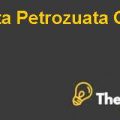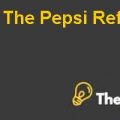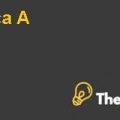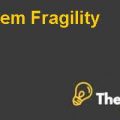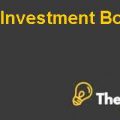
INTRODUCTION:
General Foods Corporation was looking for the new project to invest as they were growing rapidly. The company was looking forward to increase the market share in the desert market. In the same year, the company was considering whether or not to accept the new project for the production of instant desert. This instant desert was the unique product that was never produced before. The major product line of the General Foods Corporation included Maxwell House Coffee, Jell-O and Birds Eye, Kool-Aid and Post. Crosby Sanberg was the financial analyst of the General Foods Corporation and he was focused onto the Super Project because of its exponential growth with the other deserts available in the market. The market growth was increased by 7.6% from 1965 to 1966. This shifted the focus of the company on this project in which the company should perform the capital budget analysis to be aware of the future.
For evaluating the new projects that required investment of more than $50,000; the company established some financial policies. These new projects were examined for the purpose of determining that how these projects would increase profits of the company, improve the quality and increase the production capacity of new as well as existing products.
The investment for the project was requested about $200,000 that was used for the purchase of new packaging equipment and building space for the Superior project. This project would take place in the production facility in which Jell-O was manufactured by using the excessive capacity of Jell-O agglomerate. According to the case information, there was a need to make decision on the basis of the capital budgeting approach that the Super Project would be evaluated using different perspectives for making the right decision. This decision would also improve the performance of the company. The decision that involved the capital budgeting for the project also incorporated the cost under the situation, which was associated with the project. To analyze the project, General Foods Corporation was using the incremental basis, in which expenses were directly attributable to the project. Furthermore, this report contains the analysis that is performed by taking different alternatives into considerations.
PROBLEM STATEMENT
The Finance Manager of General Food Corporation, Crosby Sanberg was concerned about the capital budgeting approach that was adopted by the company. He was concerned about defining the new investment in projects. He was also concerned about the incremental approach that the company was using for determining the capital budgeting.
ANALYSIS
General Food Corporation had established various approaches to analyze the potential of investment projects and it is due to an improvement in the quality and maximization of profits. Super Project provided the facilities to manufacture and distribute new investment by developing the new product line, which had exponential growth in the market. The payback and return on funds employed had the following criteria such as investment should only be made in the projects that showed higher return on funds. Further their policies also incorporated the payback period as that should be based on ten year because of the losses. These losses were incurred during the development of the market. General Food Corporation had incremental methods for analysis, which incorporated income, expenses and investment that was directly related to new started project under the assets.
Furthermore, four alternative solutions had been incorporated to analyze for ensuring that all the relevant information must be included for decision making purpose particularly for the Super Project. Previously, the modifications were made such as modifying the existing building space for the production of Super Project, which was $80,000 and with the new packaging cost of about $120,000.
Test Marketing Expenses represents the sunk cost of the project that was incurred earlier. However, in this case cannibalization known as erosion expenses and this is also relevant to analyze the Super Project. Further, the analysis is done by using different alternatives as possible solutions.
INCREMENTAL BASIS
This alternative for the capital budgeting determines that only the income portion of income statement with expenses portion of income statement and the investment made into the assets that are directly affecting the new project will be considered while analyzing the Super Project. On the other hand, erosion has a depressing impact as cannibalization reduced the Jell-O sales and profit. Erosion is considered as business cost that cannot be taken into account under the incremental alternative.
Incremental basis evaluation of capital budgeting approach has some benefit such as:
- It shows the highest NPV.
- It exceeds from the return on funds employed, which is 40% is in this case.
Incremental basis evaluation of capital budgeting approach has some negative impact such as:
- It did not incorporate the cannibalization effect that is also known as erosion.
Even though General Food Corporation is currently using the incremental method for the evaluation of the project but this alternative approach is not applicable to Super Project because it extensively utilizes the profitable products facilities, which are eagerly adjustable for ......................
This is just a sample partial case solution. Please place the order on the website to order your own originally done case solution.

